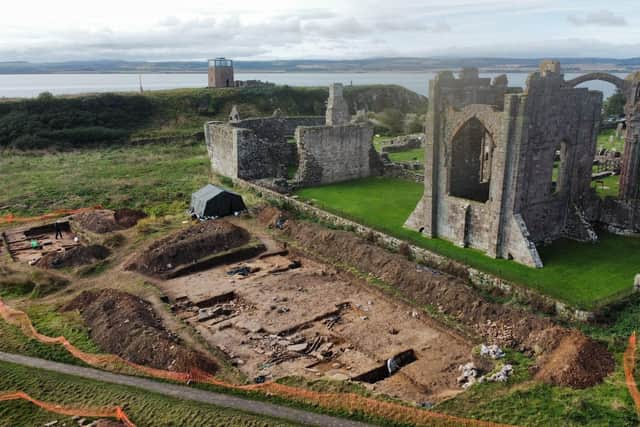Archaeological dig unearths fascinating new insight into medieval life on the Holy Island of Lindisfarne
and live on Freeview channel 276
Last year the team from DigVentures and Durham University found bones of the now extinct Great Auk and this year they were surprised to find a fragment of turtle bone.
Dr David Petts from Durham University said: “We are continuing to make important discoveries, both in the field and back in the laboratories and workspaces where we do our post-excavation analysis.
Advertisement
Hide AdAdvertisement
Hide Ad“A good example of the value of this lab work is our improved understanding of the assemblages of animal bone we’ve found on site.


"Not surprisingly, these include the usual suspects - cattle, sheep and pig, but we also have evidence that they past inhabitants were eating a wide range of foods from maritime contexts.
"Fish bone identified includes, cod, monkfish, ling, conger eel, haddock, tope shark, gurnard and ballan wrasse. Seabirds were also on the menu – and we have evidence that they were eating puffins, guillemots and gulls, and last year for the first time we found the bones of the now extinct Great Auk. The last Great Auk lived in Iceland, where the last one was killed in 1844, but there are hints of Great Auk colonies on the Farnes in the mid-18th century.
"Other animal remains include whale and seal bone – possibly being exploited not just for their meat, but also their fat and oil.
Advertisement
Hide AdAdvertisement
Hide Ad"Perhaps the most surprising discovery was a fragment of turtle bone – we think that this may be the first time that turtle has been found in an archaeological assemblage in Britain.”


Site work has included more exploration of the remains of a series of large stone structures, including a beautifully constructed culvert.
"These seem to belong to one of the earliest phases of activity – and may even predate the presence of the monastery,” said Dr Petts. “We are impatiently waiting the return of the results of some radiocarbon dating that will help us tie down the precise chronology for this phase.
"The major development this year is that we’ve also excavated a section of a large ditch that underlies these stone structures- and must predate them. Have we found prehistoric Holy Island? Hopefully further radiocarbon dates will help clarify this over the coming year.”